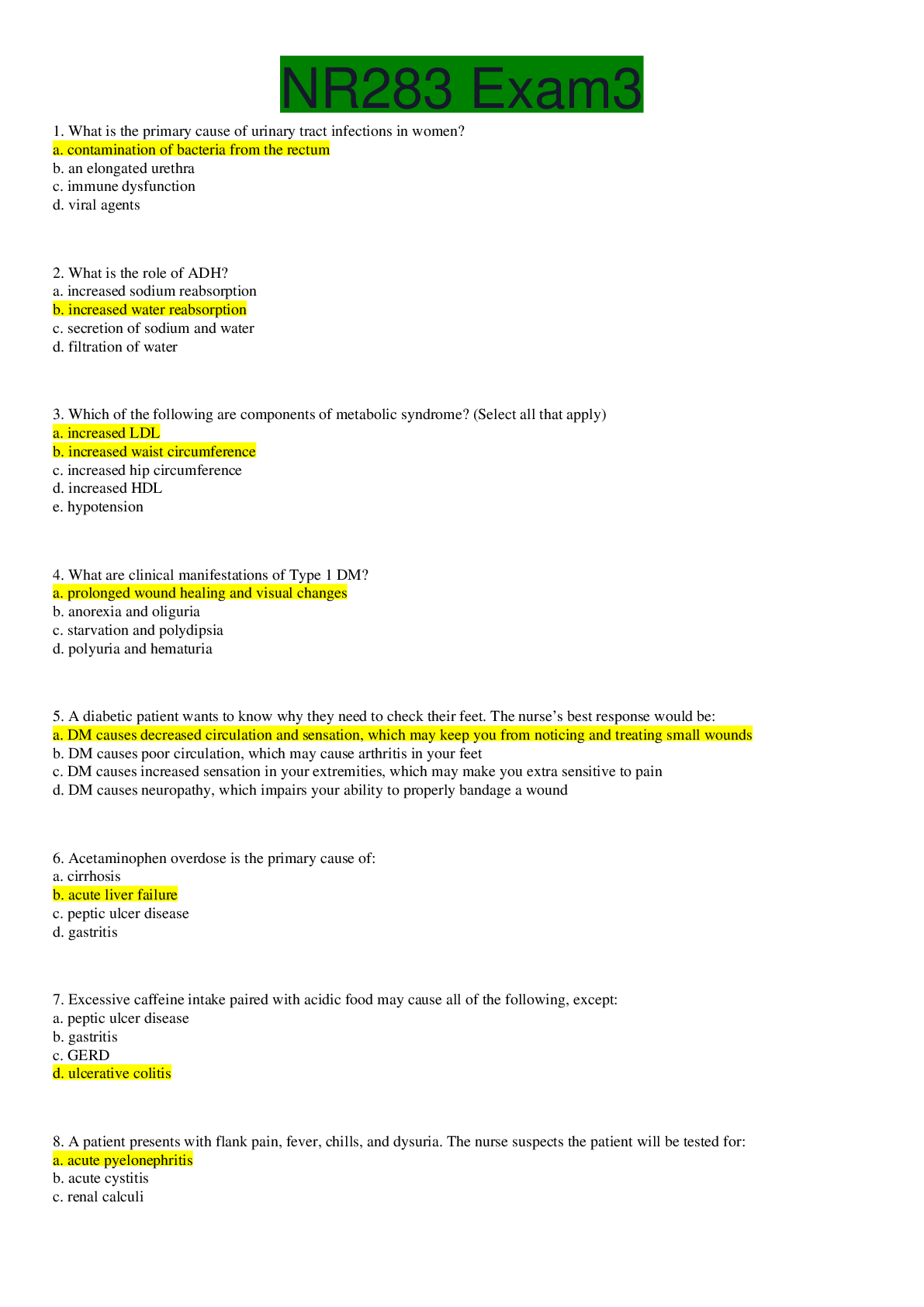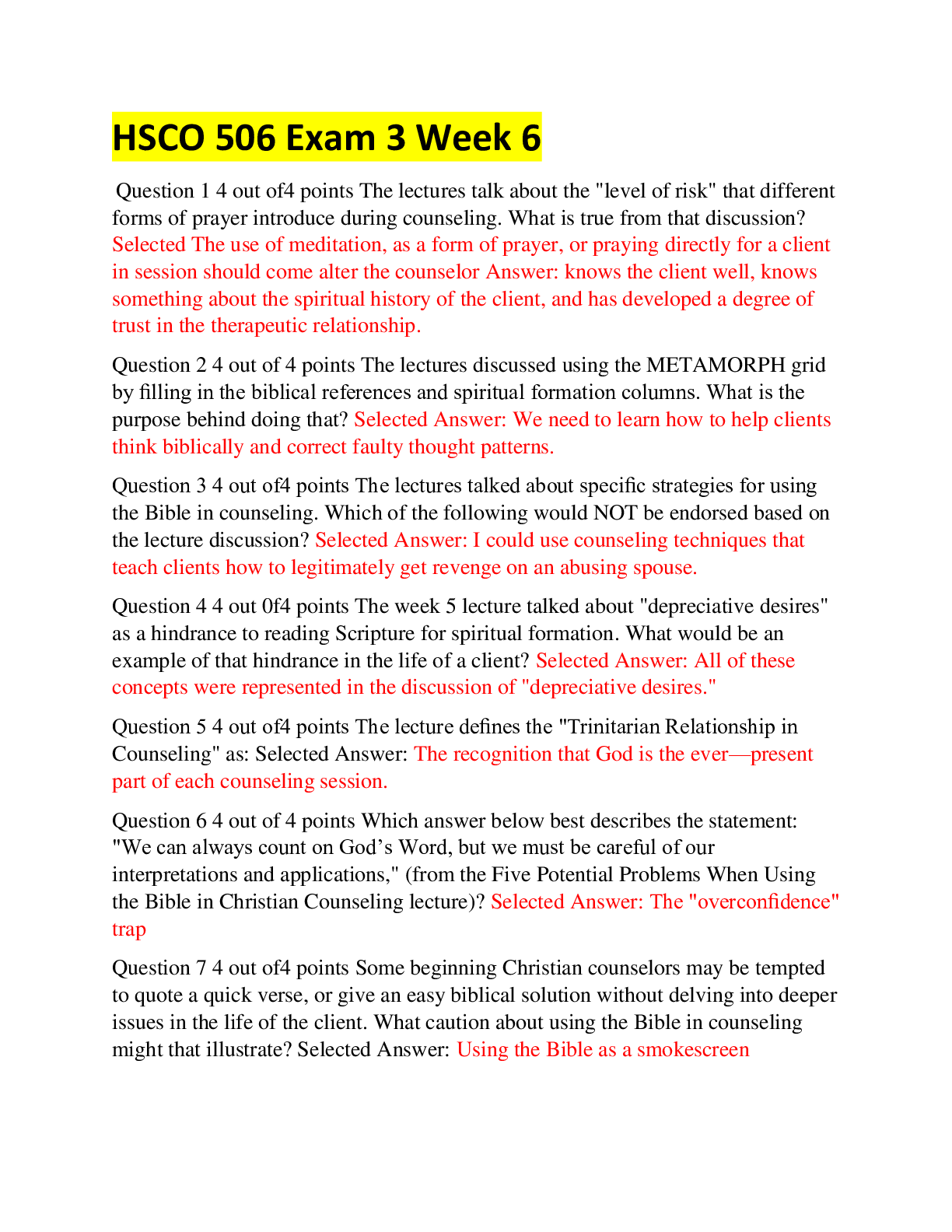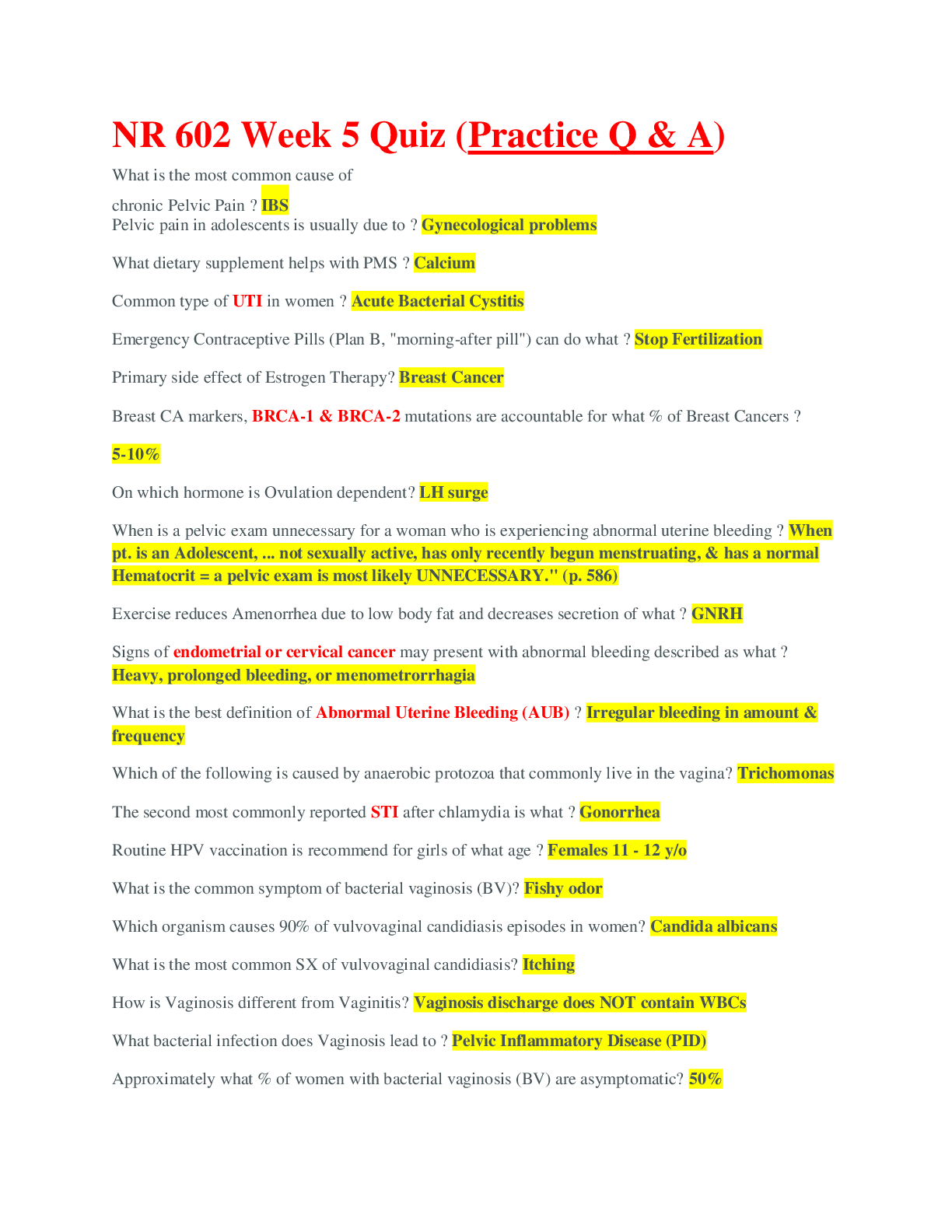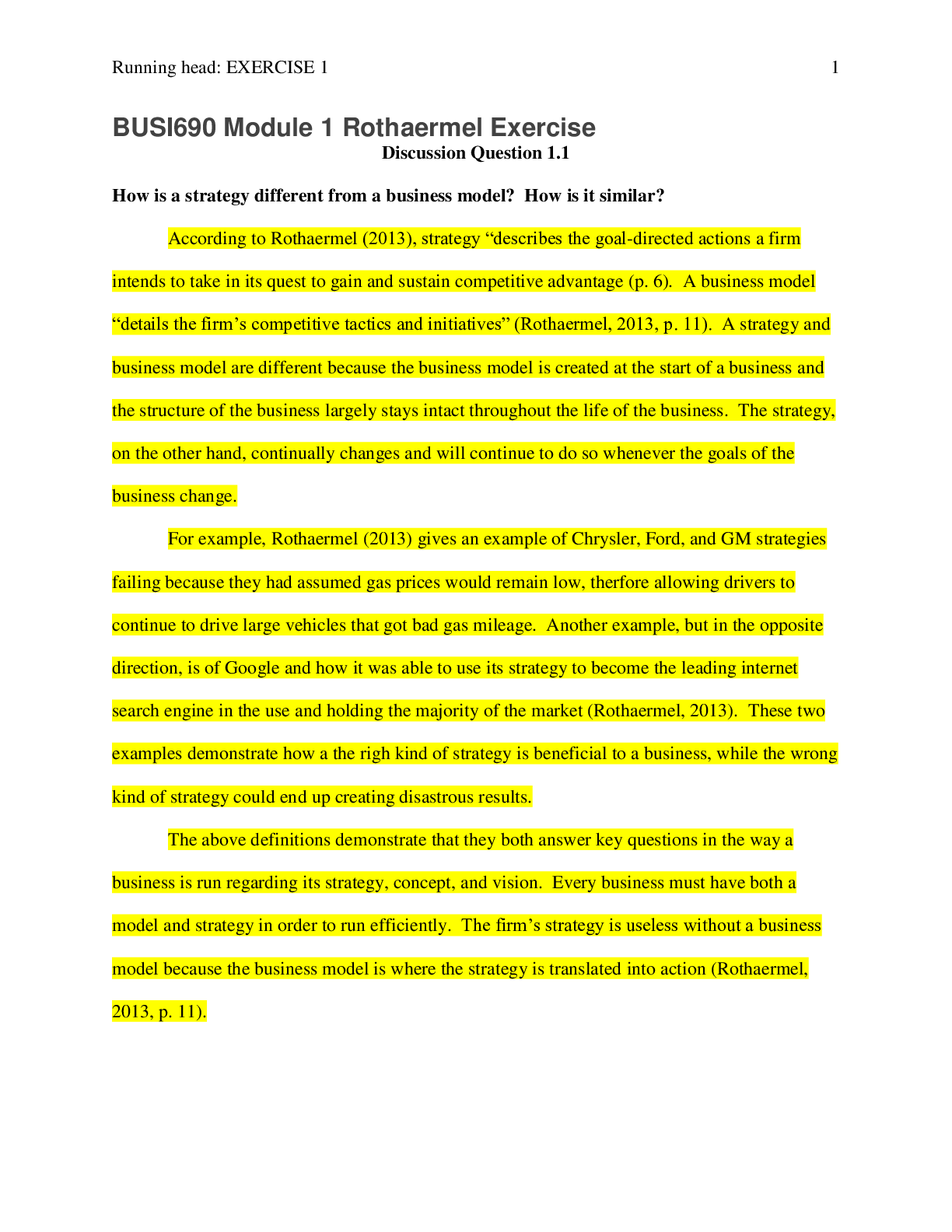NR283 Exam 3 Practice Test With All Latest Solutions Graded A
Document Content and Description Below
NR283 Exam3 1. What is the primary cause of urinary tract infections in women? a. contamination of bacteria from the rectum b. an elongated urethra c. immune dysfunction d. viral agents 2. Wha... t is the role of ADH? a. increased sodium reabsorption b. increased water reabsorption c. secretion of sodium and water d. filtration of water 3. Which of the following are components of metabolic syndrome? (Select all that apply) a. increased LDL b. increased waist circumference c. increased hip circumference d. increased HDL e. hypotension 4. What are clinical manifestations of Type 1 DM? a. prolonged wound healing and visual changes b. anorexia and oliguria c. starvation and polydipsia d. polyuria and hematuria 5. A diabetic patient wants to know why they need to check their feet. The nurse’s best response would be: a. DM causes decreased circulation and sensation, which may keep you from noticing and treating small wounds b. DM causes poor circulation, which may cause arthritis in your feet c. DM causes increased sensation in your extremities, which may make you extra sensitive to pain d. DM causes neuropathy, which impairs your ability to properly bandage a wound 6. Acetaminophen overdose is the primary cause of: a. cirrhosis b. acute liver failure c. peptic ulcer disease d. gastritis 7. Excessive caffeine intake paired with acidic food may cause all of the following, except: a. peptic ulcer disease b. gastritis c. GERD d. ulcerative colitis 8. A patient presents with flank pain, fever, chills, and dysuria. The nurse suspects the patient will be tested for: a. acute pyelonephritis b. acute cystitis c. renal calculi d. acute renal injury 9. Which of the following is the best way to diagnose DM? a. HbgA1c b. random blood glucose level c. stress test d. glucose challenge 10. Which of the following is an example of postrenal injury? a. hypovolemia b. enlarged prostate c. hydronephrosis d. cardiac arrhythmia 11. Which of the following is seen in Type 2 DM, but is not a factor in Type 1 DM? a. decreased insulin production b. insulin shock c. diabetic ketoacidosis d. insulin resistance 12. All of the following are more commonly seen in children than older adults, except: a. ulcerative colitis b. type 1 diabetes c. appendicitis d. cirrhosis 13. What is the most common complication of portal hypertension? a. esophageal varices b. rectal varices c. cirrhosis d. pulmonary hypertension 14. A patient is diagnosed with portal hypertension. What is most likely the cause? a. hepatitis C b. cirrhosis c. ascites d. jaundice 15. A patient with hyperthyroid may experience all of the following symptoms: (select all that apply) a. heat intolerance b. hunger c. increased energy d. lethargy e. decreased basal temperature f. edema 16. What is the relationship between TH and TSH? a. TH stimulates TSH production b. TSH stimulates the thyroid to make TH c. TSH stimulates the thyroid to stop making TH e. TH and TSH are produced simultaneously 17. What is a main difference between Crohn Disease (CD) and Ulcerative Colitis (UC)? a. CD has lesions only in small intestine and UC causes lesions throughout the entire GI system. b. CD may cause lesions throughout the GI system and UC causes lesions only in the colon. c. CD is an inflammatory disease, while UC is caused by an immune response. d. CD causes continuous symptoms, while UC causes intermittent symptoms. 18. Which of the following is a risk factor for portal hypertension? a. Heart failure b. Kidney stones c. Anemia d. Esophageal varices 19. One of the components of the nephron is the loop of Henle. The nurse knows that this part of the nephron primarily does which function? a. Water reabsorption b. Sodium reabsorption c. Urea recycling d. Potassium secretion 20. A patient diagnosed with Type 1 Diabetes mellitus (DM) wants to know the cause. The nurse’s best response is: a. Type 1 DM is a common pediatric chronic disease caused by autoimmune destruction of the pancreas b. Type 1 DM is a reversible chronic disease that affects adults with metabolic syndrome c. Type 1 DM is a common pediatric disease caused by a viral destruction of the beta cells d. Type 1 DM is a genetic disease that is passed down from parent to child [Show More]
Last updated: 2 years ago
Preview 1 out of 5 pages

Buy this document to get the full access instantly
Instant Download Access after purchase
Buy NowInstant download
We Accept:

Reviews( 0 )
$12.00
Can't find what you want? Try our AI powered Search
Document information
Connected school, study & course
About the document
Uploaded On
Jun 20, 2020
Number of pages
5
Written in
Additional information
This document has been written for:
Uploaded
Jun 20, 2020
Downloads
0
Views
162

.png)








.png)















